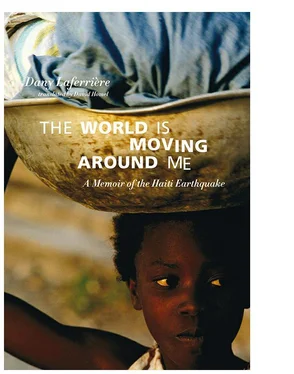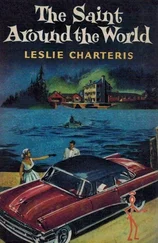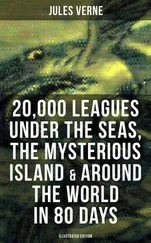Wood
People have started talking about wood again. I remember that before the earthquake, the problem of clear-cutting was on the agenda. That’s all anyone talked about, especially in the international media. Haiti was on the brink of ecological disaster. No trees, so nothing to hold down the arable land when the hard rains fell. You could literally see the bones of the country. That’s because people cut down the trees to make charcoal. In recent years, every presidential candidate added tree-planting to their program. If there are any trees left standing, it’s because concrete has become the favorite building material. But since it failed the earthquake test, the latest talk is of going back to wood, since it’s more flexible and resisted the tremors better than cement. That’s true enough, but if we go back to wood, we’ll risk ecological catastrophe.
My Nomadic Friend
My friend Dominique Batraville lives in Port-au-Prince, but I don’t have his address. In any case, he’s never home. I always meet him at an art show, a book launch, or a press conference at the Ministry of Culture. He’s a cultural journalist, exactly what I did when I lived here. He’s part of the group of young poets that my brother-in-law Christophe Charles published a few decades ago in his magazine, which featured only poets eighteen years old or younger. His first collection of poems in Creole, Boulpic , was a great success. Like many in his generation, he went through hell without a complaint. When I ask after his health, he’ll slap his chest with his open palm: his way of reassuring me. His way of defying his illness, too. You never know what shape he’ll be in when you see him. He has his ups and downs. When things are going really bad, he’ll disappear from sight for a month or more. Alarmed, his friends go looking for him, though they know he’ll reappear on his own one day. And suddenly he’s there. You can hear his characteristic laugh from a distance. One of the few men I know who has no enemies. You should never say something like that, but I say it in his case. He crosses borders effortlessly in a country where social classes are no laughing matter. He’s a jack-of-all-trades: radio host, newspaper journalist, poet, actor, and volunteer impresario. Often you see him with a talented young artist he’s promoting. He travels the city. You picture him ever more fragile, especially since his mother’s death. When he catches my concerned look, he gives me a wink of reassurance. While Frankétienne watches Port-au-Prince from the balcony of his house where he stands bare-chested, Batraville moves through the city on foot. He knows every part of it. With his way of covering the territory, he reminds me of Gasner Raymond, my friend who was murdered by the dictatorship thirty-five years ago. Gasner was positively caustic. Although Batraville’s laugh might seem sarcastic at times, you can tell right away that he’s a generous, gentle man. You can feel it by the way he opens his arms wide when he goes to greet you — he does it with his whole body. I breathed easier when I learned he had survived the earthquake. In his precarious state, the man sums up this untamable city.
A Photo
In this broken place, a lot of people who have come to help brought their cameras with them. At first they try to capture the suffering on film. The pictures are sent to their friends via the Internet. Then, after a while, they begin to enjoy it. Every photo creates a certain amount of interest back home. And every amateur photographer dreams of being in the right place at the right time to get a great picture. They imitate the professionals by shooting away at everything and anything. I met one of those amateurs happily shooting blindly into the crowd. He told me he was taking a photo class at a Miami university with an old-school teacher who accepts paper photos only, which cost him a fortune. Be spontaneous, no framing, give me untouched reality. The teacher tears up the pictures so quickly you wonder if he took the time to look at them. He told me all about his class as he went on shooting. I watched him and realized his method is not much different from his teacher’s. And wondered who was taking the photo: he or the camera? Why didn’t he take the time to look at the person he was photographing? What is this need to shoot people blindly? As if any picture will do. The look he gave me made me realize we weren’t living in the same century. It takes me at least an hour to photograph a scene, but with his machine, he can take fifty a minute. I look like an old artisan with my black notebook in which I note down every detail that will help me sketch out a face. We followed the crowds and ended up on the square in front of the ruined cathedral. We went on talking about our different art forms and our respective methods. He seemed more receptive than before, making mental calculations to see how much he could save with this technique of a single photo. Still, there’s something seductive about a photographer shooting multiple pictures of the same subject. I don’t know what a writer at work looks like. We came across a woman standing with her arms thrown open in front of a great black cross — all that remains of the cathedral. I sat down on a low wall to write. How to describe a scene like that? He took just one picture.
New Landmarks
The government can name streets if it wants to, but people have their own way of establishing landmarks. A church, an empty house, a park, a public building, a stadium, a cemetery — anything can be a landmark. People invent their own personal map of the city. They come from the countryside with precise information that will help them locate a family member or friend. Luckily, no one building looks like another, and no urban plan was ever considered. Everyone had his say when it came to building his house so it wouldn’t look like a rabbit hutch. Every house can be found thanks to its originality and especially its loud colors. But when everything has been destroyed, and since people have always refused to orient themselves according to street names, it’s a little hard to get your bearings, especially at first. That situation created a new reality and people had to adapt fast. “You know where the Caribbean Market used to be? Well, you go past it, and then two buildings that collapsed …” To the landscape of this crumbled city, people have added elements of the old one still present in their memory. For the population whose minds are always in ferment, things accumulate instead of disappearing. We’ll have to wait for a generation who never knew the old city, and who’ll be willing to accept a new map.
Golf
For the last few months, the golf course has been occupied by a crowd of people who knew nothing about the game before the earthquake. The game is hard to comprehend in a city so overpopulated. It takes up too much space for too few people: no more than a dozen bored spouses and young mistresses who pretend to be amused as they wait for the game to end. A tiny white ball for such a vast surface — it seems like another provocation. And the players take their time in a country where the abbreviated life expectancy pushes people into constant agitation. Anyway, soccer is our passion. The land is good, but there’s not a single fruit tree in sight. Most agronomists believe that our survival can be credited to the mango and avocado trees that serve as a rampart against famine. The owners of the golf course are getting worried; they sense that the crowd is not about to leave the grounds. It took an earthquake to get them here, and it will take an event of equal magnitude to chase them away.
The Chair
Between Aunt Renée’s and my mother’s bed, in the narrow room, stands a chair. It’s an old chair that my grandmother brought from Petit-Goâve. It reminds me that my grandmother, before she died, shared this room with my Aunt Renée. My mother slept in the room where my sister is now. After my grandmother’s death, my mother came and replaced her, next to Aunt Renée. She couldn’t be left alone at night since her heart attack. The room is Spartan, with two single beds separated by an old chest of drawers. And the chair where I would sit when I wanted to spend time with them. Actually, I used the chair to converse with my mother. When I talked to Aunt Renée, I preferred to sit on the bed. I was the only one to whom she granted that privilege. After her illness began, she had trouble expressing herself, and you had to be close to her to understand. My mother knew her so well she could anticipate her every desire even before she spoke it. The other family members did their best to decipher the noises she made. But since I was rarely there, I had to concentrate on her face (her mouth and eyes) to understand her. She repeated every word several times, with a touching kind of patience, until I understood what she was trying to say. Often it was the same thing: news of my daughters, how my health was, the subject of the book I was writing. We clung to these conversations and refused all intermediaries (starting with my mother) who would have served as translators. After a conversation with Aunt Renée, I would sit on the chair, taking my place between the two women who occupied such an important place in my life, and in my writing as well. The chair, like the room itself, has aged, but my mother doesn’t see it that way. She wants my sister to have it repaired. And when my mother really wants something, she’ll talk about it day and night. My sister is in a tough spot. She can’t really ask a tradesman to take care of an old chair when they are all busy with more urgent jobs. Meanwhile, my mother won’t leave her alone. Without the chair, she’s afraid she won’t have any more visitors.
Читать дальше












